Quite a lot happens on this website, althought it doesn't show directly on the English frontpage. But we regularly extend our collection with publications on nuclear power,
we publish news and analyses on nuclear power in the Netherlands, we digitize (old and even ancient) information and we make
it avalaible onnline. Laka is working on a daily base to make its website an even beter tool for anybody who needs information on any aspect of nuclear power.
So please don't be disappointed if this English news section is not updated very often -we are focusing mainly on the Netherlands. But
nevertheless, there is a lot to find on this site.
Check for instance the Laka library-catalogue which includes about 8,000 books and reports. It is easy to search, start with the search tool
above these lines. Many of the publications in the documentation centre are meanwhile available online, and if not, please ask and
we see what we can do!
 Last year, the Dutch Province of Limburg started an alliance in which, besides the local government, research institutes, small nuclear reactor (SMR) developers, utilities, industrial customers and funders cooperated. With this "Limburg SMR alliance" Limburg tried to lead the way towards an SMR in Limburg. The preferred site for a first SMR would be Chemelot, a chemical industry cluster near Geleen. Chemelot's director was also in favor, initially. Last month, however, a report from the alliance revealed that Chemelot had abandoned its ambition for a small nuclear reactor: " Chemelot realised that it is undesirable as a location due to the mutual risks of chemical plants, combined with the safety requirements of an SMR." The alliance is now considering its options. (more…)
 Yesterday, the ANVS, the Dutch nuclear supervisor, authorized the
transport of up to six shipments of fissile enriched uranium from Russia to Urenco in Almelo. This is remarkable because after the Russian invasion, almost two years ago, the uranium-enriching state-owned company in Almelo claimed to be "very concerned" about developments in Ukraine and therefore "stopped all contracts" with Russia.
Local newspaper Tubantia now reports that Urenco is enriching uranium from Russia for "a French nuclear power plant operator." It would, according to a Urenco spokesperson, be a breach of contract not to do so. (more…)
 EPZ, the operator of the Borssele nuclear power plant, has long claimed that it recycles "95 percent" of its nuclear fuel, and that only "5 percent" remains as nuclear waste. Following a complaint by Laka, the Board of Appeals of the Dutch Advertising Authority, ruled yesterday that these are misleading environmental advertisement claims. In its ruling, the Board blames EPZ all the more because these misleading claims appear on EPZ's website under the header “Environment & Health”, where 'unsuspecting visitors should expect accurate and balanced information about nuclear fuel and nuclear waste'. (more…)
 (Nederlandse versie) (Nederlandse versie) On Sunday, September 11, the Mikhail Dudin arrives in the port of Rotterdam; a ship carrying Russian uranium. There it will be transferred to trucks that will then transport it across the Netherlands on Monday to Lingen, Germany, where the uranium will be processed into fuel rods. This was announced this morning by the Russian Ecodefense, Bündnis AgieL from Germany and Laka in a joint press release. A few weeks ago, it was already known that a transit license had been issued by the Dutch regulator ANVS for the transport of Russian uranium through the Netherlands. As far as is known, this will be the first transport of Russian uranium in the Netherlands and Germany after the Russian invasion of Ukraine. (more…)
 (Nederlandse versie) (Nederlandse versie) Laka sometimes gets the question that if nuclear power plants in France can be used flexibly, can nuclear power not be used as a intermittent source of electricity, complementing wind and solar?
The short answer then is, that if nuclear power plants can be used flexibly, it does not mean that in France nuclear power plants will come to the rescue as soon as the sun sets. Coincidentally, Dutch nuclear energy research center NRG recently reported that they are investigating precisely this for French EDF: How to make nuclear fuel more resistant to "transients" (changes in reactor power), because, according to experts at NRG: "At the moment, [French] nuclear power plants are designed to operate at a constant power: it's on or off." (more…)
 Laka launches a database with almost 5,000 posters from the worldwide anti-nuclear movement. The database is part of Laka's 'special collections' - the fighting culture of the international anti-nuclear movement - which also includes music and graphic novels. Apart from campaigning against the pro-nuclear revival in the Netherlands, Laka has an important function as treasurer of the cultural heritage of the anti-nuclear movement: in the Netherlands but also internationally.
Laka has a large collection of posters itself, but has expanded the collection for this database over the years with images of posters received from other organizations or to be found on the internet. All these almost 5000 posters exist not only as digital files but also on paper: that is one of the conditions to be included in this collection. Another condition is that the size must be larger than 21x30cm (A4) to be considered a poster. On this poster page there is also attention for other online collections of posters from other social movements, an overview of poster books, and more. (more…)
 New brochure focusing on the uranium enrichment consortium Urenco New brochure focusing on the uranium enrichment consortium Urenco
The Treaty of Almelo was signed on 4 March 1970 ‒ an agreement between the Netherlands, the United Kingdom and West Germany on setting up a company with the aim of enriching uranium: Urenco. The origin of uranium enrichment is military and until then enrichment was primarily the monopoly of the United States and Soviet nuclear-weapon states. (more…)
 Despite its triumphant press release of the contrary, two years ago, NRG, the operator of the High Flux Reactor in the Netherlands, this week confirmed Laka’s suspicion that NRG is still using weapons-grade highly enriched uranium in its reactor. Therefore, the Netherlands is currently in breach of its agreement with Obama, reached at the Nuclear Security Summit in the Hague in 2014, to cease the use of weapons-prone highly enriched uranium for civil medical use.
(more…)
 It has been almost eight years since the Tohoku earthquake and Fukushima nuclear accident in Japan.
Oshidori Mako and Ken are Japanese comedians who have kept track of the aftermath of Fukushima. In 2019, they will visit the Netherlands, Germany and France to hold lectures to give us an insight into the on-going disaster. Please join, our talk and discussion to make our way to sustainable and renewable energy for a better future.
Organized by Hope Step Japan. Language: English and Japanese, Entrance: 5 euro (students are free of charge)
Amsterdam, Wibaustraat 3b ( Wibauthuis, Hogeschool van Amsterdam)
Tuesday February 5, 2019; 19:00 - 21:00 hr
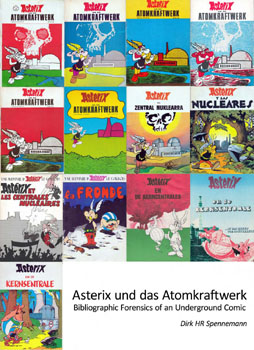 Exactly fourty years after its 'birth' Asterix und das Atomkraftwerk is honoured with a poster-exhibition in Austria.
Asterix und das Atomkraftwerk was first created in Vienna in 1978 by cutting up existing Asterix comic books, rearranging selected panels and adding a new narrative into the speech bubbles. The story of the successful resistance of the Gaulish village that was declared a site for a nuclear power plant resonated with the anti-nuclear movement. Pirated copies were circulated in various German towns even before the first German edition was stopped through legal action by the copyright owners of the Asterix brand. The volume was translated and adapted to Dutch, French and various dialects Spanish, incl. Basque. (more…)
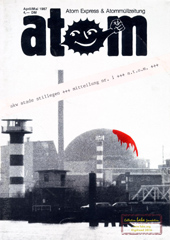 A trove of magazines from the Dutch anti-nuclear movement has been digitized by Laka. Many hundreds of issues are available online. Laka is now working on digitising its collection of anti-nuclear magazines from countries other than The Netherlands (Germany, UK, USA, etc.).
[ Start here] to discover this part of the library.
Dataset of magazines
Before digitizing articles was possible or doable, Laka entered crucial information of articles in a database. This dataset from the early days of the digital era, called 'Adder', has been rescued and contains around 40.000 articles from the Netherlands and abroad. It is easy to search as it has been categorised by many volunteers in over two thousand tags. Some of the articles in Adder have a direct link to their online issue. If not, you're welcome to request a scan or copy by e-mail.
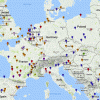 Today, the Laka-foundation released a list with reports from almost 1,000 incidents and (near) accidents with nuclear power plants and other nuclear facilities. Since 1990 the International Atomic Energy Agency IAEA has gathered these reports. The full list of reports gives neighbors, NGO’s and journalists a better insight into how often and how grave there have been serious mishaps at nuclear facilities around the world.
Accidents and technical and human errors are reported by national nuclear regulatory agencies to the International Atomic Energy Agency IAEA. The IAEA collects the incident reports in order to warn other nuclear operators for possible routes of failure. The IAEA’s aim is that by doing so, similar accidents at nuclear power plants, reprocessing plants, fuel enrichment plants, nuclear laboratories, irradiation facilities and with radioactive transports, can be prevented. (more…)
 As you might know, nuclear rectors are also being used in the production chain of isotopes. In the Netherlands, there is currently a plan to build a new research reactor, Pallas, as the successor of the EC-owned High Flux Reactor in Petten. We see there is a strong tie between the community operating a reactor for isotope production, and continuing R&D on nuclear power in general. Also isotope-production with particle accelerators has a few essential advantages, notable less or no long lived waste, no need for fission products and a decentralization of production.
Laka has been conducting a strong campaign against the plans, focusing on new means of irradiating/producing medical isotopes, mostly with accelerators.
The operator of the HFR, ECN/NRG, is also in charge of a cleanup operation for legacy nuclear waste at their site. As they claimed that they couldn't shoulder the financial burden for the legacy waste they threatened with filing a bankrupt which would also stop the production of isotopes. So in October ECN/NRG got a quick €40 million subsidy from the national government, to continue with waste processing and with the irradiation activities for isotope production. (more…)
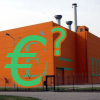 In 2011 the Dutch government granted life time extension to Borssele, the only Dutch nuclear power plant. Where it was initially supposed to be closed in 2003, the closure was postponed till 2013 and its now set to 2034. Therefore, the plant will be kept on-line
for 60 years.
Borssele's life extension means it will produce more nuclear waste then was initially foreseen, and this is why the Dutch government also granted an expansion of the COVRA intermediate nuclear waste storage early 2015.
Laka Foundation appealed the expansion of the COVRA nuclear waste storage in February 2015. One of the objections of Laka c.s. is that the (interim) storage of nuclear waste at Covra is expanded without there being a plan what to do with the nuclear waste after closure of the Covra. There is a national fund which should collect enough interest to finance eventual construction of a final repository around 2100 and there's a tentative research program which is planned to last until 2100. And that's it.
read more
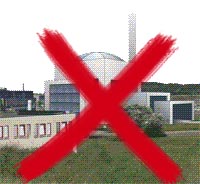 Last weekend, Dutch radio [pressrelease, in Dutch] revealed a local government decision to stop financing the preparatory phase for Pallas, a proposed research reactor for medical isotopes. The secret decision is reportedly based on the weak business case which NRG, the initiator of the new-build project, submitted to the province of Noord-Holland. The members of the local government body are said to have had little confidence in the business case or the ability of NRG to attract private finance for the Pallas-reactor project (estimated cost: EUR 600m). (more…)
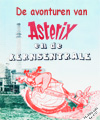 Asterix und das Atomkraftwerk Asterix und das Atomkraftwerk was first created in Austria in 1978 by cutting up existing Asterix comic books, rearranging selected panels and adding a new narrative into the speech bubbles. The story of the successful resistance of the Gaulish village that was declared a site for a nuclear power plant resonated with the anti-nuclear movement. Pirated copies were circulation in various German towns even before the first German edition was stopped through legal action by the copyright owners of the Asterix brand. Well over 20 German-language print versions have been identified. The volume was translated and adapted to Dutch, French and various dialects Spanish, incl. Basque. Laka Foundation publishes two studies and compiled an exhibition on the comic. (more…)
 The Laka-library consists of about 8,000 books about nuclear energy.
A new search-programme makes it much easier to find the publications you're looking for. On this page more information on the Laka-library can be found and the catalogue can be accessed through the subject-list in a drop down menu.
You can also search the catalogue on specific terms, part of a title or authors here. More and more of the publications are available as pdf, but still a vast majority of publications are only available on paper. You can request a copy. This is often possible (for a small fee.)
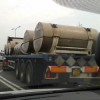 Recently, the American Senate published a report on Wall Street Bank Involvement with Physical Commodities. It turns out that Goldman Sachs investment bank speculates with 12.8m lbs (5.800 tonnes) of U 3O 8 and an unknown amount of UF 6. The bank doesn't physically move the uranium, but acquires ownership title when uranium is stored at:
U3O8 uranium products
- Comeko facility in Ontario, Canada;
- Comurhex facility in France;
- Converdyn facility in Illinois;
|
UF6 uranium products
- an Eurodif facility in France;
- Urenco facility in Germany/UK/Netherlands;
- Louisiana Energy Services facility in New Mexico;
- USEC facility in Paducah, Kentucky.
|
The Netherlands has a limited list for which purposes ionising materials can be applied. Amongst those are for example energy production and uranium enrichment. Speculation, and storage and transport for speculation are not allowed. Recently, a permission was issued by Dutch authorities for transporting uranium through the Netherlands to ao. Comurhex France and for UF6 to Urenco, Almelo. Laka has appealed these permissions, as it was likely that uranium to be transported was going to be used for speculation - a non-allowed purpose.
Read more here.
New publication: The Pallas business case - between dream and reality (in Dutch)
An assessment of the plans for a new research reactor which is said to be necessary for the production of medical isotopes. The reactor should be privately funded (expected costs doubled to 600 million euro in a few years) and should enter operation in 2023. Laka raises serious doubts about the business case and fears that government has to step in at a later stage to save the project with public money. The could be a choice if there were no alternatives for the production of medical isotopes, but there is: See the May 2010 Laka report: Medical Radioisotope Production Without A Nuclear Reactor. Here you can find an English summary of the June 2013 report.
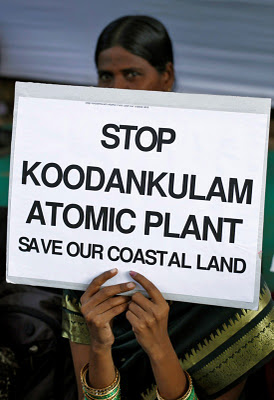 In the most southern part of India, Tamil Nadu, the local population is fighting the largest nuclear complex under construction in the world: Koodankulam. The state repression increased over the months and is expecting to increase further after a large police force is send to the village of Idinthakarai, ostensibly to ensure restart of construction.
Although the protest originates from the 1980's it intensified dramatically last year after Fukushima and the announcement by the government that the first of six reactors would enter test-operation late 2011. Many thousands op people took to the streets and acted continuously against Koodankulam, resulting in postponing operation of the nuclear reactor. State repression has always been harsh, but is escalating since last year, against the non-violent activities of the People's Movement Against Nuclear Energy (PMANE)
Read more and show your solidarity
New publication: Responses after Chernobyl and Fukushima. A comparative analyses of Germany and The Netherlands
The worldwide reactions on the nuclear disaster at Chernobyl (Ukraine, 26 April 1986) were quite different in different countries. So were the worldwide reactions on the nuclear disaster at Fukushima (Japan, 11 March 2011). On both governmental level as well as on a public level. This article is a comparative overview of the worldwide responses two both disasters, with (West-) Germany and the Netherlands as amplified examples.
It is clear it will take some time to analyze the precise consequences of the Fukushima nuclear disaster on a political level, as well as for the future of nuclear power in general. Nevertheless, this is a first attempt, focusing on the differences compared to Chernobyl in two neighboring countries.
Read the paper (pdf)
Not completely surprising came the announcement of Dutch utility Delta about postponing plans to build a second nuclear power plant in the Netherlands because of the poor investment climate and low electricity prices. Although Delta states it remains committed to the project, not many believe in its resurrection.
Delta had plans to build a nuclear power plant with a maximum capacity of 2,500 megawatts in the Zeeland province in the southwest of the country, next to an existing plant near the town of Borssele, but said on January 23, 2012 it was delaying these for two to three years. "The last half-year the investment climate has worsened due to the financial crisis. In addition, overcapacity of electricity production has increased further due to the recession," Delta said in a statement. (more…)
 In cooperation with WISE, Laka published a beautiful book with 600 posters against nuclear power from 45 countries. The book is a compilation of the large cultural heritage of 40 years of global struggle against nuclear energy. Never before such a rich collection of anti-nuclear posters was brought together, or, for that matter, of any other societal issue, of so many countries, cultures and of such a long period.
This book truly is an homage to the richness of the cultural heritage of the antinuclear power movement and could be a source of inspiration for anyone deciding to design a poster. (more…)
New Laka research report: Medical Radioisotope Production Without A Nuclear Reactor
This report is answering the key question: 'Is it possible to ban the use of research reactors for the production of medical radioisotopes?' The answer is 'yes'.
Radioisotopes production with cyclotrons offers many advantages over a nuclear reactor: the volume of radioactive waste produced by cyclotrons is far less and much less hazardous than the radioactive waste of research reactors; the production is decentralized and there is no proliferation risk.
Read more and download the report.
New article: Medical Isotope Production. Conversion from HEU to LEU based production and alternative methods
Since 1992 the US restricted its high-enriched uranium (HEU) exports to encourage other countries to convert civilian facilities to low-enriched uranium (LEU), which can't be used directly to make nuclear weapons. Instead in mid 2005 Congress passed the Energy Policy Act of 2005, which includes provisions relaxing restrictions on HEU exports for medical isotope production. The primary beneficiaries of the new law are producers of medical radioisotopes.
Read more (pdf)
 Laka launched a new website on the history of nuclear power in The Netherlands. It is the result of almost 18 months research in thousands of documents available in the Laka documentation centre, but also in many other archives. Thanks to this project, many original documents are now available online for the first time. For instance all government nuclear energy white papers since 1952. Even all paragraphs on nuclear energy (related-issues) in the election-programms by the different political parties since the early fifties.
The site (in Dutch) already turns out to be an important source for journalists, scholars and activists to either find background information on a special issue, or as a start for historical research.
 On February 14, 2008, an Expert Meeting was held on the Risks of Depleted Uranium Use in Weapon Systems in Amersfoort, the Netherlands. The meeting was organized because of a round table conference (short hearing) organized by the standing committee of Defense from the Dutch Parliament and held the same day. Presentations were given by Henk van der Keur (Laka Foundation), John LaForge (Nukewatch), Dr. Avril McDonald (expert on legal issues), Prof. Dr. Keith Baverstock (scientist, former official and advisor of the WHO) and Krista van Velzen (MP of the Dutch Socialist Party).
The report (pdf, 640kb) includes the discussion of the round table conference held in the Dutch parliament and is bilingual (partly in Dutch). It is also available on paper (52 pages). If you want a copy please contact us.
New article: 'Thorium based nuclear power: an alternative?'
It is said that the global reserves of thorium are considerably larger than natural uranium. Therefore the call for thorium-based nuclear energy is rising. In the past 50 years basic research and development on the use of thorium-based fuel cycles has been conducted in Germany, India, Japan, Russia, the UK and the USA.
Test reactor irradiation of thorium fuel to high burn-ups has also been conducted and several test reactors have either been partially or completely loaded with thorium-based fuel. But is it really an alternative?
read more (pdf)
New article: 'In time of hype, telling the truth becomes a revolutionary act'
The war of words over Iran's nuclear ambitions has escalated recently, with the French Foreign Minister Bernard Kouchner warning the world to "prepare for the worst, and the worst is war" (although later withdrawn) and especially a spate of articles in the US print media targeting ElBaradei and the IAEA after agreeing on a time-schedule with Iran to answer outstanding questions about Iran's nuclear program.
This article examines the latest developments and analyses the role of the IAEA and ElBaradei
read more (pdf)
New article: Emerging Nuclear States.
Thailand is one of many countries announcing to go 'the nuclear path'. It almost seems that every self respected government announces such plans, even unlikely candidates as Nigeria , Morocco or Myanmar. It's very unlikely that even a majority of those plans will materialise for many reasons. Not the least important reason is that it is obviously harder to built a countries' first as the second or third nuclear power plant....
read more (pdf)
New publication: Monopolizing the fuel supply: The GNEP, GNPI and Fuel Bank initiatives
One of the most urgent problems the nuclear community has to 'solve' before a relapse of nuclear energy is possible is the proliferation issue. Nuclear energy makes the nuclear bomb possible in many ways: know-how and skills, materials, technologies, processes and methods. The difference lies only in the intention.
One of the ways the nuclear society wants to 'solve' this is to monopolize the nuclear infrastructure and technology and restrict access to nuclear fuel. Internationally several initiatives are currently being developed.
But all these initiatives are undermining Article IV of the Non proliferation Treaty - and with that the entire NPT, because Article IV is the 'carrot' in the NPT-'stick'.
Even if proposals to limit the accessibility of technology and nuclear fuel could somehow be brought into force, it would still not result in eliminating the proliferation risks associated with a (foreseen) large expansion of nuclear power.
read more (pdf)
|  Last year, the Dutch Province of Limburg started an alliance in which, besides the local government, research institutes, small nuclear reactor (SMR) developers, utilities, industrial customers and funders cooperated. With this "Limburg SMR alliance" Limburg tried to lead the way towards an SMR in Limburg. The preferred site for a first SMR would be Chemelot, a chemical industry cluster near Geleen. Chemelot's director was also in favor, initially. Last month, however, a report from the alliance revealed that Chemelot had abandoned its ambition for a small nuclear reactor: "Chemelot realised that it is undesirable as a location due to the mutual risks of chemical plants, combined with the safety requirements of an SMR." The alliance is now considering its options. (more…)
Last year, the Dutch Province of Limburg started an alliance in which, besides the local government, research institutes, small nuclear reactor (SMR) developers, utilities, industrial customers and funders cooperated. With this "Limburg SMR alliance" Limburg tried to lead the way towards an SMR in Limburg. The preferred site for a first SMR would be Chemelot, a chemical industry cluster near Geleen. Chemelot's director was also in favor, initially. Last month, however, a report from the alliance revealed that Chemelot had abandoned its ambition for a small nuclear reactor: "Chemelot realised that it is undesirable as a location due to the mutual risks of chemical plants, combined with the safety requirements of an SMR." The alliance is now considering its options. (more…)


 EPZ, the operator of the Borssele nuclear power plant, has long claimed that it recycles "95 percent" of its nuclear fuel, and that only "5 percent" remains as nuclear waste. Following a complaint by Laka, the Board of Appeals of the Dutch Advertising Authority, ruled yesterday that these are misleading environmental advertisement claims. In its ruling, the Board blames EPZ all the more because these misleading claims appear on EPZ's website under the header “Environment & Health”, where 'unsuspecting visitors should expect accurate and balanced information about nuclear fuel and nuclear waste'.
EPZ, the operator of the Borssele nuclear power plant, has long claimed that it recycles "95 percent" of its nuclear fuel, and that only "5 percent" remains as nuclear waste. Following a complaint by Laka, the Board of Appeals of the Dutch Advertising Authority, ruled yesterday that these are misleading environmental advertisement claims. In its ruling, the Board blames EPZ all the more because these misleading claims appear on EPZ's website under the header “Environment & Health”, where 'unsuspecting visitors should expect accurate and balanced information about nuclear fuel and nuclear waste'. 



 Despite its triumphant press release of the contrary, two years ago, NRG, the operator of the High Flux Reactor in the Netherlands, this week confirmed Laka’s suspicion that NRG is still using weapons-grade highly enriched uranium in its reactor. Therefore, the Netherlands is currently in breach of its agreement with Obama, reached at the Nuclear Security Summit in the Hague in 2014, to cease the use of weapons-prone highly enriched uranium for civil medical use.
Despite its triumphant press release of the contrary, two years ago, NRG, the operator of the High Flux Reactor in the Netherlands, this week confirmed Laka’s suspicion that NRG is still using weapons-grade highly enriched uranium in its reactor. Therefore, the Netherlands is currently in breach of its agreement with Obama, reached at the Nuclear Security Summit in the Hague in 2014, to cease the use of weapons-prone highly enriched uranium for civil medical use. It has been almost eight years since the Tohoku earthquake and Fukushima nuclear accident in Japan.
It has been almost eight years since the Tohoku earthquake and Fukushima nuclear accident in Japan.

 Today, the Laka-foundation released a
Today, the Laka-foundation released a  As you might know, nuclear rectors are also being used in the production chain of isotopes. In the Netherlands, there is currently a plan to build a new research reactor, Pallas, as the successor of the EC-owned High Flux Reactor in Petten. We see there is a strong tie between the community operating a reactor for isotope production, and continuing R&D on nuclear power in general. Also isotope-production with particle accelerators has a few essential advantages, notable less or no long lived waste, no need for fission products and a decentralization of production.
As you might know, nuclear rectors are also being used in the production chain of isotopes. In the Netherlands, there is currently a plan to build a new research reactor, Pallas, as the successor of the EC-owned High Flux Reactor in Petten. We see there is a strong tie between the community operating a reactor for isotope production, and continuing R&D on nuclear power in general. Also isotope-production with particle accelerators has a few essential advantages, notable less or no long lived waste, no need for fission products and a decentralization of production. In 2011 the Dutch government granted life time extension to Borssele, the only Dutch nuclear power plant. Where it was initially supposed to be closed in 2003, the closure was postponed till 2013 and its now set to 2034. Therefore, the plant will be kept on-line
In 2011 the Dutch government granted life time extension to Borssele, the only Dutch nuclear power plant. Where it was initially supposed to be closed in 2003, the closure was postponed till 2013 and its now set to 2034. Therefore, the plant will be kept on-line




 In cooperation with WISE, Laka published a
In cooperation with WISE, Laka published a 
